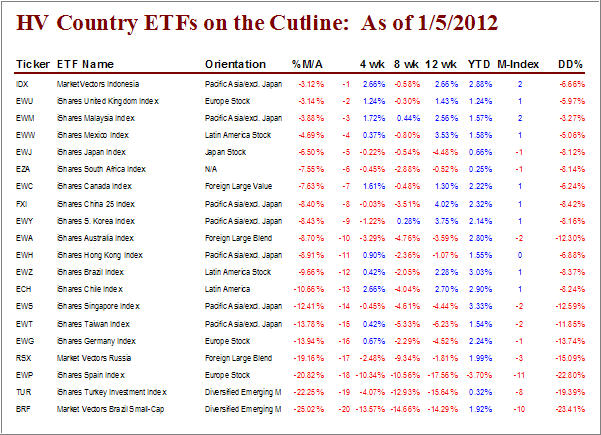As the whole world seems to have turned upside down in a financial sense, it nevertheless beckons the question of whether opportunities still exist in some parts of the globe.
Although the U.S., Europe, and parts of Asia are going through difficult times to say the least, there are other regions which have appeared to do well on a short-term basis such as Latin America.
However, that’s not to say that effects of the European contagion can suddenly infect emerging markets partially dependent on European financing. We only have to look to U.S. Treasuries to see that investors worldwide are flocking to them during periods of great uncertainty.
We currently have country ETFs listed as a selective buy, but there are still inherent risks. Achieving diversification is difficult without purchasing a number of country ETFs from various regions. Meanwhile, Country ETFs are sensitive to political risk, especially as we saw last year in the Middle East with the Arab Spring, which led to significant volatility in Middle Eastern markets.
However, that doesn’t mean that opportunities are out of sight. For example, the iShares Sweden Index (EWD) has had a nearly 3% return in the last 3 months. The contagion has spread from the European periphery to core countries such as France and Germany, but non-Eurozone nations such as Sweden with monetary policy independence, fiscal discipline, low debt-to-GDP, and limited exposure to Eurozone debt, can prove attractive.
At the present time, most country ETFs don’t look particularly appealing as all of them on the High Volume ETF Country list (<$10 million) are below their moving averages as the following table shows:
[Click on table to enlarge]No one can deny the fact that Europe’s woes have had a negative worldwide impact.
While it’s understandable that global volatility might deter investors from investing in country ETFs at the moment, if we start seeing an improvement, they can be a good addition to your portfolio. Though China and India have slowed down, other emerging nations have considerably strong fundamentals that could possibly warrant investment. Asset manager PIMCO has outlined a long-term emerging markets breakout in their New Normal philosophy.
Brazil pops up as noteworthy contender given the level of infrastructure development the country has undergone, not to mention that it has better credit fundamentals. Although its debt-to-GDP is relatively high just above 66%, it pales in comparison to much of the Eurozone as well as other developed markets. Thus, the iShares Brazil Index (EWZ) can definitely be something to keep on the radar.
Despite the fact that the overall international picture is far from rosy, that doesn’t mean that we can’t prepare to add some ETF exposure outside of fixed income if markets move into bullish territory. Although that day is probably a ways off, we want to be prepared to take advantage when the opportunity calls.
Disclosure: No holdings
Contact Ulli
